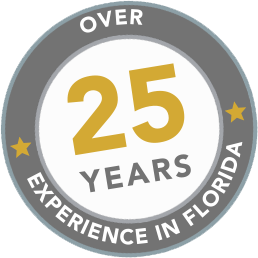Merritt Island National Wildlife Refuge
Merritt Island National Wildlife Refuge is one of those places that’s easy to overlook in Central Florida’s pantheon of great natural attractions but is well worth adding to your ‘Must See’ list for a taste of the REAL Florida.
When you’re ready to see alligators in the wild, along with otters, turtles, manatees, wild pigs and, especially, birdlife, the 140,000-acre Refuge is definitely the place to go.
This key point on the Great Florida Birding Trail is notable as a major migration stop-over for birds in the autumn, winter and spring, and is wonderfully picturesque, set on the shores of the Indian River Lagoon. It boasts a mixture of salt-water marshland, pine flatwoods and coastal dunes that act as natural habitats for all the wildlife.
Just to start with, it makes for an excellent side-trip if you’re heading out to the Kennedy Space Center or visiting anywhere else along the Space Coast. It’s easy to find—just off I-95 and Highway 1 through Titusville—and it’s inexpensive, at just $10 per car, per day (cash only).
And, unlike the Lake Apopka Wildlife Drive experience we featured a few weeks ago, it also has a full Visitor Center to set the scene and get you started.
Getting to the Refuge
It is 73 miles, and about a 75-minute drive, from the Champions Gate area in the heart of villa territory, and is an extremely enjoyable route through the Florida countryside.
Take I-4 east to the start of the 417 Central Florida Greeneway (a toll road, remember) and follow the signs for the Airport. You’ll actually go past the airport’s southern entrance before, after 26 miles on the 417, picking up the Beachline Expressway (the 528, and another toll road) at Exit 26, signposted for Cocoa Beach.
Head east along the Beachline for 21 miles and then take the LEFT exit for State Road 407 (with signage for the Kennedy Space Center). After just a mile, look for the signpost for I-95 north, and take the motorway for another eight miles to Exit 220 for Titusville.
This junction will put you on State Road 406 (Garden Street) east through the city of Titusville, and it is just eight miles from I-95 to Merritt Island Wildlife National Refuge itself.
What to do first
Unless you’ve already visited the Refuge on a previous trip or are only interested in the Black Point Wildlife Drive, start by calling in to the Visitor Center (four miles past the Refuge’s main entrance), where you can pay your $10 fee and pick up a map of the area.
The Center offers an array of wildlife and habitat displays, as well as an auditorium with a constant loop film about the Refuge, which provides the ideal introduction to the many habitats that make up this varied environment.
Be sure to ask the staff for a Boardwalk Scavenger Hunt leaflet – fun for children and their parents – then head outside and hit the boardwalk trail for a gentle quarter-mile wander, taking in great views of two freshwater ponds, a native butterfly garden, cypress hammock and wetland prairie with wildlife and birds.
This is the only place in the Refuge with full toilet facilities (there are basic facilities at Stop No.9 on the Wildlife Drive), while it also boasts a bookshop and drinking water facilities.
Take note – the Visitor Center is only currently open Wednesday to Saturday from 8am-4pm, but the Wildlife Drive is open every day, and you pay your $10 fee at the self-pay station at the Drive entrance (exact cash required) if the Visitor Center is closed.
Black Point Wildlife Drive
The essence of the Refuge is this one-way, seven-mile driving trail through the heart of the extensive preserve. The entrance is right off State Road 406 (where it changes to the A. Max Brewer Memorial Parkway across the Indian River Lagoon), and the speed limit is 15mph.
You’ll want to keep it slow, too, so as to enjoy the vast panorama of the seemingly endless ponds, marshes and canals that are the main reason for the rich birdlife.
You probably won’t see as many alligators as the Lake Apopka Wildlife Drive, but you might also see armadillos, snakes and turtles, and there is a short hiking trail (at Stop No.4) that features two observation decks built as duck blinds for up-close bird-watching. If you have brought binoculars with you, this is definitely the place to use them.
There is a Tour Booklet you can pick up at the Visitor Center that highlights the Wildlife Drive, and there are 12 stopping points that all have roadside parking where you can pull over to read the info for each one. You should allow at least an hour for the drive.
Bird-watching is good year-round, but is especially rich from October to April, while waterfowl are most in abundance from November to February.
It should go without saying that you should never approach or feed any of the wildlife, and it is a good idea to bring an insect repellant with you if you plan to get out of the car at any stage. The mosquitos can be a nuisance.
Otherwise, just get out there and drink in the sights and sounds of Florida at its finest and take LOTS of photographs!
PS: If you’d also like some beach time on your visit, continue north along Highway 1 for 37 miles and you’ll reach fab New Smyrna Beach.






